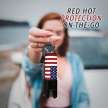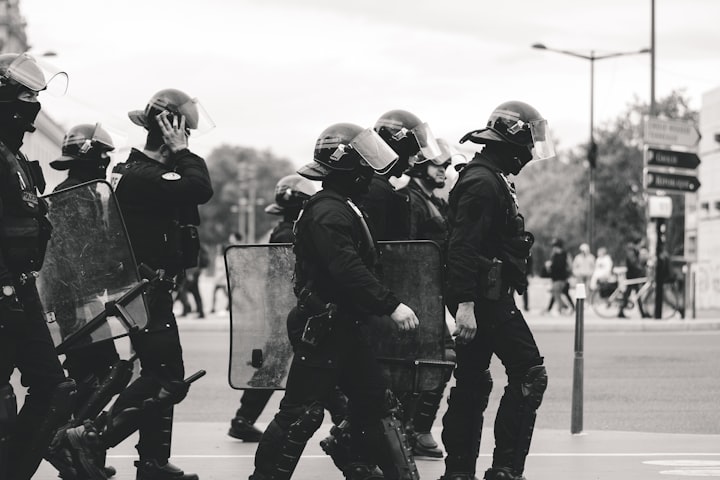Which Police Baton is The Most Popular and Widely Used One?
Police Baton
The police baton was an important part of the culture and history of military organizations before the invention of firearms. In 1864, Britain also introduced a "baton calling system" for their Yeomanry cavalry. It consisted of an officer holding a baton at shoulder height, with two armed soldiers flanking them. This is not the only method to signal commands or orders during marches or drills.
Variations include tapping rifles, clapping hands, or stomping boots on the ground. The use of hand signals has remained in use today in military parades and drills but they are mainly used as communication between fellow soldiers rather than with civilians. The emergence of firearms rendered the baton obsolete on the battlefield since officers could now issue commands more quickly and in greater secrecy than with a baton. Today, its utility is more ceremonial.
In the United States military, enlisted service members are referred to as "troops" and the highest-ranking enlisted member of a company is called a "Company First Sergeant". The first sergeants are assigned their own "first sergeants' baton". Company first sergeants carry their company's guidon into battle. However, as with any other weapon, the first sergeant's primary weapon is his or her rifle.
An Overview of Police Baton
Police baton is a common form of less-lethal weapons used by law enforcement officials. Batons are constructed with lightweight aluminum, steel, or other durable material for tacking down violent suspects. They are also made with polymers, rubber, or foam in order to minimize serious injuries.
Typically, police officers can use batons at their discretion as a response to criminal activity and when those officers believe that their safety is in jeopardy due to disorderly conduct. You might have heard of the famous French policeman Jacques Mesrine who escaped from prison on eight separate occasions using his police baton as his weapon and tool of escape.
Types of Police Baton:
A police baton is a club that can be used for self-defense, riot control, and parades. They were developed in France in the 1880s and are mainly used by law enforcement and military organizations. Police typically use either a straight or expandable baton with an electroshock device. There are three types of these batons:
1) Straight Batons:
Straight police bats are made of wood or metal rods cut to specific lengths and tapered at one end to form a handle while the other is sharpened into a point. Straight police batons can be made of plastic, fiberglass, or cultured marble. The baton is usually reported by officers as being either six feet or eight feet long with a maximum thickness and weight of nine ounces.
2) Expandable Batons:
Made from metal rods, expandable batons have a rubberized end that expands from the handle for a better striking surface. They are typically one foot longer than the straight-handled baton.
3) Electroshock" Batons:
Electroshock models are either collapsible or expandable and have an electroshock device in the grip end that is energized by electricity from built-in batteries. They can either be six to eight inches in length and made of rubber or plastic or as long as 12 inches and made of metal.
Why Choose Straight Batons?
Straight batons are typically used by police officers, military personnel, security guards, corrections officers, and emergency services personnel for self-defense. The straight police baton is used by police forces in many countries for any number of reasons, including the following:
1) The straight baton is a tough self-defense tool providing a wider striking surface area than other types of batons allowing the end user greater strength. It is also easier to use than a collapsible model because it requires less swinging.
2) The straight baton is a powerful tool for use in riot situations. It is capable of subduing a violent individual or groups of individuals particularly when used in conjunction with non-lethal means of control, including tear gas, gases, and smoke.
3) The straight baton can also be used for crowd control where it has proven effective as both a defensive and an offensive weapon when used against individuals who are violent or intent on breaching the peace.
4) A straight police baton can also be used to strike an inanimate object (such as a perpetrator's car door), kick, strike hard surfaces (like the ground), or scrape shingles off a roof to mark the perpetrator's location.
As a self-defense weapon, a straight police baton is often used by women to defend themselves against men (particularly in some countries), since it is shorter than a man's forearm while being heavier than a woman's arm. In addition, the narrow grip makes it easier for a woman to wield effectively in close-quarter situations such as wrestling or fighting.
Straight batons are more likely than other types of batons to cause injuries when used against non-human targets (which is of particular concern in North America due to the presence of mace). This is because the end of the baton has an edge and thus greater surface area for impact.
About the Creator
Mai Sophia
A Writer/blogger by day, a knife enthusiast and survivalist by night. I've reviewed a lot of products and have helped people make the right purchase







Comments
There are no comments for this story
Be the first to respond and start the conversation.